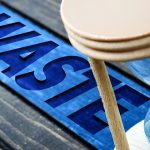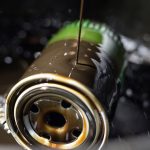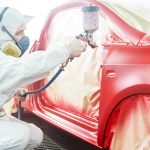Managing Auto Body Shops Bondo Sanding Debris
One aspect of body shops waste management has to deal with is sanding debris, namely bondo dust & debris. Bondo is a staple in automotive body repair and has been for years, but with changing environmental regulations it can be hard to stay on top of what is expected when it comes to disposal.
Better Safe than Sorry
When it comes to sanding excess bondo from a car, it’s important that the dust is handled correctly. Along with the bondo dust, there are also metal particulates that can be hazardous to air quality, so the general rule of thumb is that it is: better to be safe than sorry. According to the Western Sustainability & Pollution Prevention Network, the following are best practices for collecting and disposing of all sanding waste:
- Sand inside only and in designated areas to avoid spreading waste around the shop and outdoors.
- Maintain written guidelines for sanding paint waste cleanup and disposal procedures. Train employees to implement these procedures and other pollution prevention practices.
- Use “dry clean-up” methods such as high-intensity particulate arrestor (HEPA) filtered vacuum systems for sanding/paint dust. Avoid excess sweeping of floors which will send small sanding dust particles into the air. Only mop once floors have been vacuumed and are free of liquid spills. Dispose of mop water into the sanitary sewer if it meets local discharge limits.
- Contain all sanding dust and collect as sanding tasks are completed, to prevent tracking to areas inside and outside the shop. Do not wash the dust down sewer or storm drains. Dispose of as hazardous waste unless tested and deemed non-hazardous.
- When wet sanding is required, use a spray bottle on the panel being sanded to minimize wastewater as well as drips and spills. Wring out sanding rags/sponges and collect in a shallow tray or sanding wastewater settling container.
- Operate a closed wet-sanding system where water is reused instead of discharged.
- Settle out sanding wastewater or transfer to separate settling unit. The unit should be able to hold double or triple the daily volume, including mop water.
- Dispose of wet sanding waste/sludge offsite with other waste collections or as hazardous wastes. Only dispose of in the garbage if you have profiled the waste as non-hazardous.
- Label and appropriately locate settling buckets/units and inform employees to avoid disturbance during settling periods.
- Remove settled sludge before it exceeds ¼ of the container’s height (use a valve or spigot located no lower than halfway down the side of the unit.
Maintaining these best practices for any type of waste disposal is critical to avoiding hefty fines and penalties from environmental regulatory agencies. In California alone, with the changes made to the Federal Resource Conservation and Recovery Act (RCRA), hazardous waste penalties are now as high as $71,264 per day, per violation.
At Quest we can help you evaluate your waste management needs and design a program that keeps you in compliance with all local, state, and federal environmental regulations so that you don’t have to worry about these types of fines being tacked on to your operation. Our programs will also save you time and money, so it is a win/win for the planet AND your body shop’s budget.









